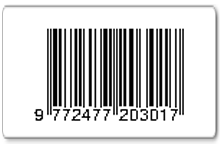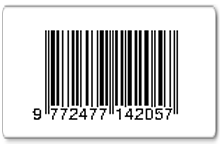Teaching Science Books Based on Bakpia Local-Potential to Improve Students’ Critical Thinking and Communication Skills
Abstract
This study is aimed at determining the effectiveness of the use of a science textbook integrated with the local potentials of bakpia in improving the critical thinking and communication skills of the junior high school students. The study was a quasi-experiment with a pretest-posttest control group research design. The experiment and control groups were taken by cluster random sampling by considering the location of the school, which is within proximity of the local potentials in question. The study was conducted in the 7th grade, at one of the junior high schools in Yogyakarta, both for the experiment and control classes. The research instruments were an open-reasoned multiple-choice test and observation sheets to obtain data on students’ critical thinking skills and communication skills. Data analysis was done by the Manova difference test assisted by the SPSS 2.0 computer program with a significance value lower than 0.05. Results showed that the value of the partial Eta squared from the Manova test was 0.981, indicating that the effectiveness of the science textbook integrated with the bakpia local potentials to improve students’ critical thinking and communication skills was in the “high” category. The test of between subject effects of the Manova test showed a significant value of students’ critical thinking and communication skills of less than 0.05. Therefore, it can be said that the science textbook was effective in increasing students’ critical thinking and communication skills, simultaneously. A limitation to the study can be in the fact that the study is not conducted directly in the bakpia factory and that it involves only 60 subjects for both the experiment and control groups. The integrated textbook of bakpia local potentials can be used as a reference for future researchers with other local potentials. The local potential integrated book can also become an alternative-learning mode, e.g.: based on STEM, with materials suitable for local potentials in other regions.
Keywords
Full Text:
PDFReferences
Afandi et al 2019, ‘Development frameworks of the Indonesian partnership 21 st -century skills standards for prospective science teachers: A Delphi study’, Jurnal Pendidikan IPA Indonesia, vol. 8, no. 1, pp. 89–100. doi: 10.15294/jpii.v8i1.11647.
Agung, L 2015, ‘The Development of Local Wisdom-Based Social Science Learning Model with Bengawan Solo as the Learning Source’, American International Journal of Social Science, vol. 4, no. 4, pp. 51–8.
Ainley, M. and Ainley, J 2011, ‘Student engagement with science in early adolescence: The contribution of enjoyment to students’ continuing interest in learning about science’, Contemporary Educational Psychology, vol. 36, no. 1, pp. 4–12. doi: 10.1016/j.cedpsych.2010.08.001
Andriana, E. et al 2017, ‘Natural science Big Book with Baduy local wisdom base media development for elementary school’, Jurnal Pendidikan IPA Indonesia, vol. 6, no. 1, pp. 76–80. doi: 10.15294/jpii.v6i1.8674.
Anggraeni, T. E. and Mundilarto, M. 2020, ‘The Development of Local Wisdom-Based Physics Cognitive Ability Assessment Instrument for Senior High School Students’, Jurnal Penelitian dan Pembelajaran IPA, vol. 6, no. 1, pp. 102–40. doi: 10.30870/jppi.v6i1.5718.
Anisa, A 2017, ‘Meningkatkan keterampilan berpikir kritis peserta didik melalui pembelajaran IPA berbasis potensi lokal Jepara’, Jurnal Inovasi Pendidikan IPA, 3(1), p. 1. doi: 10.21831/jipi.v3i1.8607.
Arnone, M. P. et al 2011, ‘Curiosity, interest and engagement in technology-pervasive learning environments: A new research agenda’, Educational Technology Research and Development, vol. 59, no. 2, pp. 181–98. doi: 10.1007/s11423-011-9190-9
Bakic-Tomic, L., Dvorski, J. and Kirinic, A 2015, ‘Elements of Teacher Communication Competence: An Examination of Skills and Knowledge to Communicate’, International Journal of Research in Education and Science, vol. 1, no. 2, p. 157. doi: 10.21890/ijres.54372.
Bower, M. G. et al 2013, ‘Assessing preservice teachers’ Presentation capabilities: Contrasting the modes of communication with the constructed impression’, Australian Journal of Teacher Education, vol. 38, no. 8, pp. 110–131. doi: 10.14221/ajte.2013v38n8.1.
Brownell, S. E., Price, J. V. and Steinman, L 2013, ‘Science Communication to the General Public: Why We Need to Teach Undergraduate and Graduate Students this Skill as Part of Their Formal Scientific Training’, Journal of Undergraduate Neurosci¬ence Education, vol. 12, no. 1.
Cameron, C. et al 2020, ‘The role of scientific communication in predicting science identity and research career intention’, Plos One Scientific Communication, vol. 15, no. 2, pp. 1–18. doi: 10.1371/journal.pone.0228197.
Changwong, K., Sukkamart, A. and Sisan, B 2018, ‘Critical thinking skill development: Analysis of a new learning management model for Thai high schools’, Journal of International Studies, vol. 11, no. 2, pp. 37–48. doi: 10.14254/2071-8330.2018/11-2/3.
Chotimah, H. et al 2017, ‘Biology Module Development Using Think Pair Share Strategy to Improve Critical Thinking Skill of Vocational High School Students’, International Journal of Science and Research (IJSR), vol. 6, no. 6, pp. 157–63. doi: 10.21275/ART20174177.
Cirino, L. A. et al 2017, ‘Broadening the voice of science: Promoting scientific communication in the undergraduate classroom’, Ecology and Evolution, vol. 7, no. 23, pp. 10124–30. doi: 10.1002/ece3.3501.
Dewi, E. C., Suryadarma, I. G. P. and Wilujeng, I. (2018) ‘Using Video Integrated with Local Potentiality to Improve Students’ Concept Mastery in Natural Science Learning’, Journal of Physics: Conference Series, vol. 1097, no. 1. doi: 10.1088/1742-6596/1097/1/012001.
Dewi, I. P. M. et al 2017, ‘The effect of science learning integrated with local potential of wood carving and pottery towards the junior high school students’ critical thinking skills’, Jurnal Pendidikan IPA Indonesia, vol. 6, no. 1, pp. 103–09. doi: 10.15294/jpii.v6i1.9598.
Dwiyogo, F. D. P. S. W. W. D 2017) ‘Effects of Problem Based Learning Strategy and Achievement Motivation on the Student?s Critical Thinking Abilities’, International Journal of Science and Research (IJSR), vol. 6, no. 6, pp. 707–13. doi: 10.21275/ART20173230.
Erdogan, V 2019, ‘Integrating 4C Skills of 21st Century into 4 Language Skills in EFL Classes Vacide Erdoğan’, International Journal of Education and Research, vol. 7, no. 11, pp. 113–24.
Forawi, S. A 2016, ‘Standard-based science education and critical thinking’, Thinking Skills and Creativity, vol. 20, pp. 52–62. doi: 10.1016/j.tsc.2016.02.005.
Hadi, S. A., Susantini, E. and Agustini, R 2018, ‘Training of Students’ Critical Thinking Skills through the implementation of a Modified Free Inquiry Model’, Journal of Physics: Conference Series, vol. 947, no.1, doi: 10.1088/1742-6596/947/1/012063.
Hardianti, R. D., Taufiq, M. and Pamelasari, S. D 2017, ‘The development of alternative assessment instrument in web - based scientific communication skill in science education seminar course’, Jurnal Pendidikan IPA Indonesia, vol. 6, no.1, pp. 123–9. doi: 10.15294/jpii.v6i1.7885.
Hidayah, R., Salimi, M. and Susiani, T. S 2017, ‘Critical Thinking Skill: Konsep Dan Inidikator Penilaian’, TAMAN CENDEKIA: Jurnal Pendidikan Ke-SD-an, vol. 1, no. 2, p. 127. doi: http://dx.doi.org/10.30738/tc.v1i2.1945.
Ibrahim, M. Y. et al 2019, ‘Communication skills: Top priority of teaching competency’, International Journal of Learning, Teaching and Educational Research, vol. 18, no. 8, pp. 17–30. doi: 10.26803/ijlter.18.8.2.
Jumriani, J. and K. Prasetyo, Z 2017, ‘Important Roles of Local Potency Based Science Learning to Support the 21st Century Learning’, European Journal of Engineering and Formal Sciences, vol. 1, no. 1, p. 6. doi: 10.26417/ejef.v1i1.p6-16.
Kalelioǧlu, F. and Gülbahar, Y 2014, ‘The Effect of Instructional Techniques on Critical Thinking and Critical Thinking Dispositions in Online Discussion’, Journal of Educational Technology & Society, vol. 17, no. 1, pp. 248–58.
Karakoc, M 2016, ‘The Significance Of Critical Thinking Ability In Terms Of Education’, International Journal of Humanities and Social Science, vol. 6, no.7, pp. 81–4.
Khoiri, A 2016, ‘Local Wisdom PAUD to Grow Student’s Soft Skills (Study Cash: Development RKH On Science Learning)’, Indonesian Journal of Early Childhood Education Studies, vol. 5, no.1, pp. 14–7. doi: 10.15294/ijeces.v5i1.11271.
Kurniawati, A. P. et al 2017, ‘The effectivenes of science domain-based science learning integrated with local potency’, AIP Conference Proceedings, 1868. doi: 10.1063/1.4995185.
Lathifah, I. N. and Wilujeng, I 2016, ‘Pengembangan perangkat pembelajaran integrated science berbasis kearifan lokal’, Jurnal Pendidikan Matematika dan Sains, vol. 4, no. 2, pp. 110–19. doi: 10.21831/jpms.v4i2.12920.
Mercer-Mapstone, L. and Kuchel, L 2017, ‘Core Skills for Effective Science Communication: A Teaching Resource for Undergraduate Science Education’, International Journal of Science Education, Part B: Communication and Public Engagement, vol. 7, no. 2, pp. 181–201. doi: 10.1080/21548455.2015.1113573.
Nisa, W. M., Nafiah, Z. and Wilujeng, I 2020, ‘Profile of critical thinking skills in student’s SMPN 1 Kalipare at topic of substance and its characteristics’, Journal of Physics: Conference Series, vol. 1440, no. 1, pp. 3–7. doi: 10.1088/1742-6596/1440/1/012081.
Nugroho, S. D. and Wilujeng, I 2019' ‘Improving Cognitive Learning Outcomes through Science Learning Videos Integrated with Local Potencies’, Journal of Physics: Conference Series, vol. 1227, no. 1. doi: 10.1088/1742-6596/1227/1/012036.
Oktasari, D. et al 2019, ‘3D Page-Flipped Worksheet on Impulse-Momentum To Develop Students’ Scientific Communication Skills’, Jurnal Pendidikan IPA Indonesia, vol. 8, no. 2, pp. 211–9. doi: 10.15294/jpii.v8i2.15737.
Ormerod, R. J 2013, ‘Research skills for the future: A consultant’s perspective’, Journal of Research Practice, vol. 9, no.1
Patonah, S 2014, ‘Elemen Bernalar Tujuan pada Pembelajaran IPA melalui Pendekatan Metakognitif Siswa SMP’, Jurnal Pendidikan IPA Indonesia, vol. 3, no.2, pp. 128–33. doi: https://doi.org/10.15294/jpii.v3i2.3111
Rahayuni, G 2016, ‘Hubungan Keterampilan Berpikir Kritis Dan Literasi Sains Pada Pembelajaran Ipa Terpadu Dengan Model Pbm Dan Stm’, Jurnal Penelitian dan Pembelajaran IPA, vol. 2, no. 2, p. 131. doi: 10.30870/jppi.v2i2.926
Rubini, B., Septian, B. and Permana, I 2019, ‘Enhancing critical thinking through the science learning on using interactive problem based module’, Journal of Physics: Conference Series, vol. 1157, no. 2). doi: 10.1088/1742-6596/1157/2/022001.
Santos, L. F 2017, ‘The Role of Critical Thinking in Science Education.’, Journal of Education and Practice, vol. 8, no. 20, pp. 160–73.
Sari, I. J., Murni, D. and Sjaifuddin, S 2016, ‘Peningkatan Kecakapan Komunikasi Siswa Menggunakan Pembelajaran Bilingual Preview Review Dengan Setting Jigsaw Pada Konsep Pengelolaan Lingkungan’, Jurnal Penelitian dan Pembelajaran IPA, vol. 2, no. 2, p. 121. doi: 10.30870/jppi.v2i2.741.
Setiawan, D. and Wilujeng, I 2016, ‘The development of scientific-approach-based learning instruments integrated with red onion farming potency in Brebes Indonesia’, Jurnal Pendidikan IPA Indonesia, vol. 5, no. 1, pp. 22–30. doi: 10.15294/jpii.v5i1.5785.
Siregar, N. C., Rosli, R. and Maat, S. M. 2020, ‘The effects of a discovery learning module on geometry for improving students’ mathematical reasoning skills, communication and self-confidence’, International Journal of Learning, Teaching and Educational Research, vol. 19, no. 3, pp. 214–28. doi: 10.26803/ijlter.19.3.12.
Suyatna, A. et al 2018, ‘Developing interactive e-book of relativity theory to optimize self-directed learning and critical thinking skills’, AIP Conference Proceedings, 2014(September). doi: 10.1063/1.5054469.
Utami, D. A., Ramalis, T. R. and Saepuzaman, D 2016, ‘Penerapan Model Pembelajaran Inkuiri Abduktif Untuk Meningkatkan Keterampilan Berpikir Kritis Dan Penguasaan Konsep Siswa Pada Materi Dinamika’, Jurnal Penelitian dan Pembelajaran IPA, vol. 2, no. 2, p. 176. doi: 10.30870/jppi.v2i2.943
Vuojärvi, H., Eriksson, M. and Vartiainen, H 2019, ‘Cross-boundary collaboration and problem-solving to promote 21st century skills-students’ experiences’, International Journal of Learning, Teaching and Educational Research, vol. 18, no. 13, pp. 30–60. doi: 10.26803/ijlter.18.13.3.
Wangsa P., P. G. et al 2017, ‘Upaya Meningkatkan Kemampuan Komunikasi dan Pemahaman Konsep Siswa melalui Pembelajaran Inkuiri Berbantu Teknik TSTS (pada Materi Gerak Lurus di SMAN 6 Bandung)’, WaPFi (Wahana Pendidikan Fisika), vol. 2, no. 2, p. 27. doi: 10.17509/wapfi.v2i2.8274.
Wibowo, A 2013, Manajemen Pendidikan Karakter di Sekolah. Yogyakarta: Putaka Belajar
Widyaningrum, R., Sarwanto, S. and Karyanto, P 2013, ‘Pengembangan Modul Berorientasi Poe (Predict, Observe, Explain) Berwawasan Lingkungan Padamateri Pencemaran Untuk Meningkatkan Hasil Belajar Siswa’, Bioedukasi: Jurnal Pendidikan Biologi, vol. 6, no. 1, p. 100. doi: 10.20961/bioedukasi-uns.v6i1.3920.
Wilujeng, I., Prasetyo, Z. P. and Suryadarma, I. G. P 2018, ‘Integrating Local Wisdom in Natural Science Learning’, in 1st International Conference of Innovation in Education, pp. 182–186. doi: 10.2991/icoie-18.2019.42.
Yusof, F. M. and Halim, H 2014, ‘Understanding Teacher Communication Skills’, Procedia - Social and Behavioral Sciences, 155(October), pp. 471–76. doi: 10.1016/j.sbspro.2014.10.324.
Zhou, Q., Huang, Q. and Tian, H 2013, ‘Developing Students’ Critical Thinking Skills by Task-Based Learning in Chemistry Experiment Teaching’, Creative Education, vol. 4, no. 12, pp. 40–5. doi: http://dx.doi.org/10.4236/ce.2013.412A1006.
DOI: http://dx.doi.org/10.30870/jppi.v6i2.8716
Refbacks
- There are currently no refbacks.
Copyright (c) 2020 Jurnal Penelitian dan Pembelajaran IPA

This work is licensed under a Creative Commons Attribution 4.0 International License.
Jurnal Penelitian dan Pembelajaran IPA is licensed under a Creative Commons Attribution 4.0 International License
Copyright © 2025 Jurnal Penelitian dan Pembelajaran IPA. All rights reserved.






